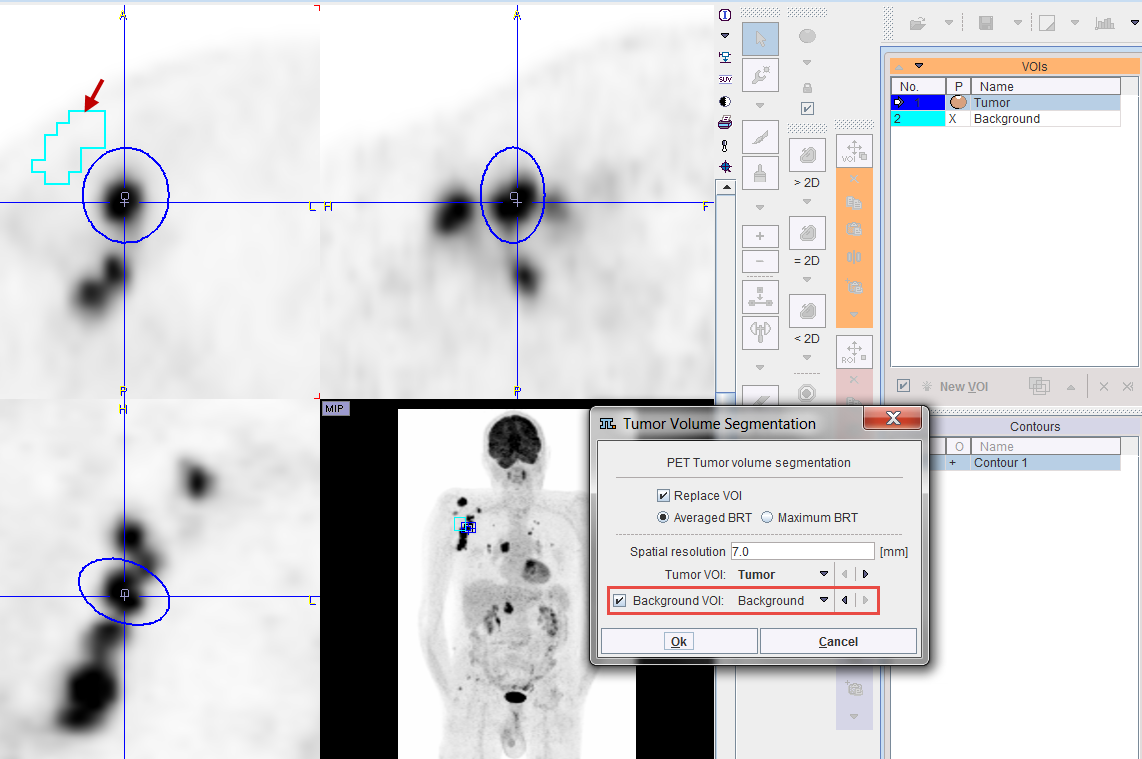There are various approaches for outlining a lesion in a PET image. The PET Tumor volume segmentation method implements an automatic model-based approach [1, 2] for determining an iso-contouring threshold which is independent of the signal-to-background ratio and provides accurate volume measurements down to the resolution of the PET scanner.
Principle
The method performs an iterative adjustment of the iso-contouring level, taking into account the scanner resolution and the background activity. In this process, the lesion geometry is approximated by a sphere and the appropriate threshold level determined by a lookup procedure which refers to a homogeneous sphere imaged at scanner resolution. During the iterations, each threshold setting results in a new tumor volume obtained by iso-contouring, which allows calculating the next threshold approximation. The process is repeated until the tumor volume becomes stable.
Required for applying this segmentation method is:
Use without Background VOI
If the tumor is isolated from the surroundings, the background can easily be obtained from the initial VOI definition. Please proceed as follows:




Use with Background VOI
If higher uptake than background is close to the tumor, the initial VOI should be close to the tumor boundaries, and an explicit background VOI should additionally be outlined as in the example below. Note that the Background VOI box needs to be checked, and the proper VOI selected from the list next to it.

Note: The method is working for group of selected VOIs. When a background VOI is defined and named "Bck" it will be automatically considered by the algorithm.
References
[1] Jentzen W.: An improved iterative thresholding method to delineate PET volumes using the delineation-averaged signal instead of the enclosed maximum signal. Journal of nuclear medicine technology 2015, 43(1):28-35. DOI
[2] van Dalen JA, Hoffmann AL, Dicken V, Vogel WV, Wiering B, Ruers TJ, Karssemeijer N, Oyen WJ: A novel iterative method for lesion delineation and volumetric quantification with FDG PET. Nuclear medicine communications 2007, 28(6):485-493. DOI